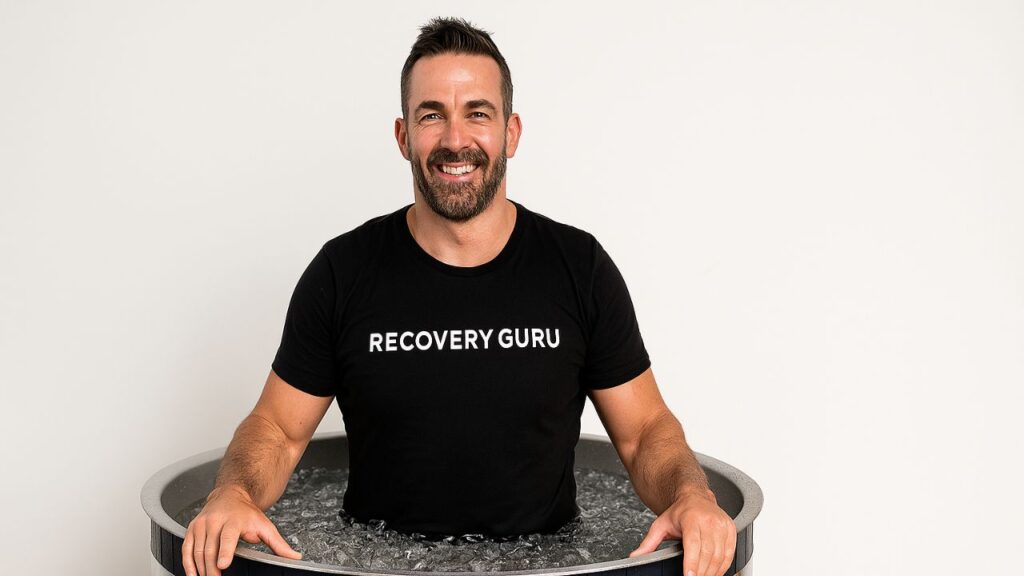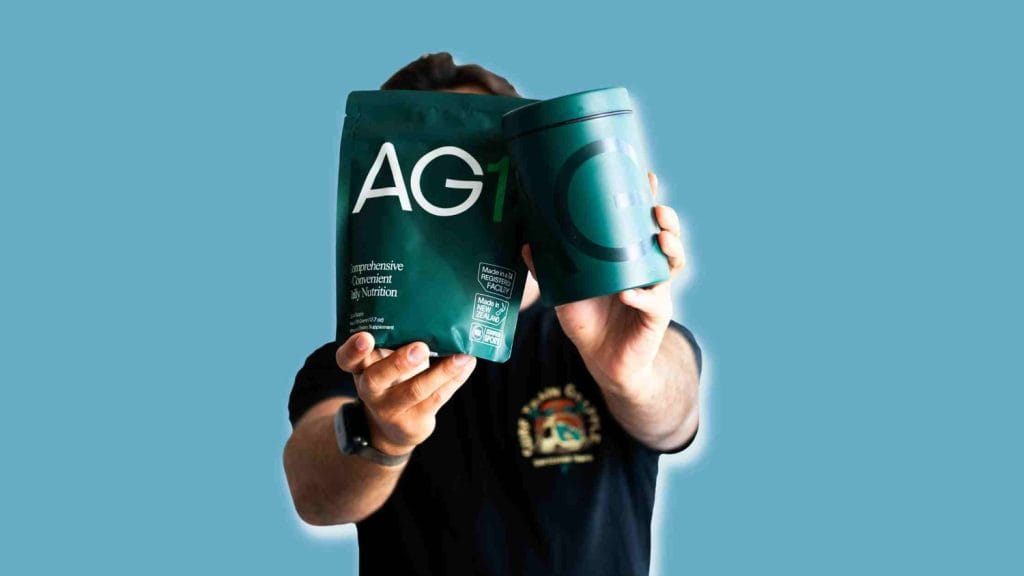How To Make A Chest Freezer Ice Bath At Home – Cold Plunge DIY
We include links to products we think are useful for our readers. If you click and buy a product through one of the affiliate links on this page, we may earn a small commission.

A simple step by step guide to converting a chest freezer to an ice bath tub for cold plunge on a budget
Welcome to our simple guide to building or converting a chest freezer into an ice bath for home.
Of course, we think a purpose built ice bath tub with all the trimmings of built-in temperature controlled chiller unit, UV sanitation and ozone filtration and the aesthetics of a proper cold plunge are great, but not everyone has the budget for that.
With just a few simple steps, you can easily transform a household chest freezer into a fully functioning cold plunge tub that allows you to control the temperature, set a timer, waterproof your freezer and make it as safe as possible for ice bathing.
If you have been considering your own DIY ice bath for a while because you are aware of all of the benefits of cold water exposure, you could either test the waters with a cheaper inflatable ice bath or jump straight into the steps for converting your chest freezer.
Buying the Right Chest Freezer for Ice Bath
There are loads of chest freezers suitable for ice baths that are available to buy online, you just need to be sure you have the correct size so that you are not curled up like a pretzel. The Westinghouse 500L or the Haier 319L chest freezers are two ideal suitable chest freezer ice baths I have come across.
When choosing a chest freezer for converting to an ice bath you need to look for:
1. Capacity in Litres
2. Chest Freezer Lid Functionality
3. Price
Choosing the right chest freezer capacity is the most important part of the process and one that I have made mistake of buying a chest freezer too small to start. A chest freezer that is 300L or larger is ideal for making your ice bath tub, but you also don’t want to go too large, so that it makes it impossible to find a comfortable position for cold plunge.
Try to find a chest freezer somewhere between 320L – 500L. Keep in mind, even 320L may be too small for you if you are over 180cm tall, so aim for something slightly larger if you are a big human or you want to stretch out completely in the chest freezer aim for 500L. If in doubt, check the overall dimension that will be available in the product specifications of the chest freezer.
For choosing a chest freezer with the right lid configuration, you will want to get one that has a lid that will remain open without holding it. Generally speaking, most chest freezers have a lid that stays open but this is something you will want to make sure of. The reason for this is that if you are in the ice bath and the lid closes for any reason, you NEED to be able to open it from the inside for obvious reasons. Look for a chest freezer without a self-locking mechanism on the lid.
Budget is another important metric to consider when looking for the right chest freezer for ice bath conversion. There are some expensive chest freezers out there, usually the size, brand and the power of the chiller unit determines the price. You can definitely achieve a suitable chest freezer for cold plunge that is under $1200. The chest freezer that we recommend will cost you about $600-1200 depending on the brand and size.
Read Also: Best Portable Inflatable Cold Plunge Tubs of 2023
Let’s get into the list of equipment you will need for your chest freezer ice bath conversion.
Equipment Needed For Converting The Chest Freezer
Below is a short list of equipment needed to convert your chest freezer ice bath. Each item has many variations that can be bought from a few different locations like hardware stores and also online on Amazon, we just recommend one variety.
Digital Temperature Controller
There are also a few optional items that you may need to buy for the optimal running, filling and maintenance of your chest freezer ice bath. These are listed below:
Building A Chest Freezer Ice Bath – Step By Step Guide
The great thing about the process of building an ice bath chest freezer is that the majority of the guide involves plugging in the pieces of equipment that have been purchased for the running of the ice bath and ensuring they are electrically safe from water.
Before we show the steps for converting your chest freezer ice bath, a quick disclaimer. Be aware that when making modifications to a chest freezer, you will be effectively voiding any warranty associated with the product. In making modifications to a chest freezer, you are not using the product for its intended purpose, which comes at its own risks.
Please consider that making an ice bath from a chest freezer involves mixing electricity with water which involves dangers and health risks for which we take no responsibility or liability.
Step 1 – Sealing The Edge Seams
As mentioned earlier, much of converting a chest freezer into an ice bath involves plugging the various bits of equipment into the adapter and filling the ice bath. The most labour intensive part of making an ice bath chest freezer is the sealing of the edges or seams with some sort of water proof sealant.
Despite what you may think, a freezer is not completely waterproof and filling the freezer full of water without sealing the edges is the quickest way to destroy your chest freezer. By sealing around the edges internal of the freezer, you are preventing any water from leaking through and damaging the electrics and also adding an element of safety to the conversion. The more you can contain the water in the actual tub, the safer the ice bath will be.
The product that we recommend using is the JB Water Weld, however you can also use a bathroom silicone to achieve a similar result. Bear in mind, if you are using the JB Water Weld product, I went through roughly 30 tubes to seal the perimeter of the chest freezer, or you could buy about 2 tubes of silicone from Bunnings to achieve a similar result.
To seal the edges, mix the JB Water Weld and spread a strip around the internal joins of chest freezer, not forgetting to seal up the drainage hole if the ice bath has one of those too. If you are using silicone, we recommend squirting a reasonably thick line of silicone around one edge, squirting it with soapy water, then levelling it off with a rubber silicone edging/scraping tool. Youtube for the best way to do this as it can get messy fast. Once you have nailed one edge, move onto the next until you have sealed every edge of the chest freezer.
Step 2 – Fit Digital Temperature Control
Chances are, you will want to control the temperature of your ice bath. Especially if you are new to cold plunge, you will not want to take your first ice bath with a solid chunk of ice on the top that you need to break apart to get in. People often ask, “how cold should an ice bath be?”. Cold water exposure is a practice that you should take slowly and start at a temperature that is uncomfortable but still safe for you.
By fitting a temperature control that is digital, you can set your desired temperature on the device and the small sensor that runs into the water will automatically switch of the ice bath when it gets down to your set cold plunge temperature.
To connect this correctly, all you have to do is plug the chest freezer power plug directly into the digital temperature control unit and have the sensor running into the water. This will act as a thermostat and turn the ice bath chiller unit on and off to keep at a good temperature for you.
Step 3 – Setting Up Water Filtration
One of the most important ways to keep your chest freezer ice bath running smoothly is by having good water filtration. Adding a water filtration to your chest freezer is very simple and will make sure that your ice bath is always clean and ready for cold plunge.
Despite that fact that you might (and should), clean your feet and have a quick rinse of the body before getting into your chest freezer ice bath, you will be surprised at the amount of debris, skin and hair builds up in the ice bath. To combat this we use a water filter. A water filter also serves to keep the water moving around the ice bath which is great for breaking the thermal layer of the skin to increase the benefits of the cold water exposure.
To add a water filtration unit like the one we recommended, simply place the water filter in a spot where the most debris build up, and run your cable out to a suitable spot, linking the cable for digital temperature gauge to keep it all neat – this is where the zip ties come in handy.
NOTE: for the highest degree of safety, ensure you either turn of the filter or remove it from the ice bath when you are using it to avoid electrocution.
Step 4 – Ozone Sanitation Unit
Although the water filter does a great job of cleaning the water, you still require some form of water sanitation in your chest freezer ice bath to keep it as clean and hygienic as possible.
What will happen if you don’t use any form of sanitation in your ice bath? Eventually, a film of slime will start to build up on the surfaces of the ice bath and that will progresss into algae which you definitely don’t want in your ice bath.
Basically, an ozone generator pumps a small amount of gas into your water which has a strong sanitising effect. Many people also use chemical or salts as a form of sanitation but this can then effect your water filter and change the crisp feel of your ice bath.
There are loads of different ozone generators and each one has the ability to service a different volume of water. The one we have recommended should be enough to keep your chest freezer ice bath water clean and pure. If you find the water is getting a little too dirty, it is time to empty the water and refill again.
Like the ice bath and the water filter, you can also connect the ozone generator to run on a timer switch. We recommend running the ozone filter for a few hours a day at least, along with the water filter that can be run 24 hours a day (except when you are using the ice bath). To add the ozone generator to your ice bath, you can simply set up the actual unit outside the chest freezer somewhere and run the tube into the water along side the water filter cable so that when you take the filter in and out you are taking the ozone out too.
Step 5 – Levelling The Chest Freezer
The step is about positioning your chest freezer ice bath in a location and way that will give the most structural integrity to the base of the ice bath, since most chest freezers do not have the weight specs to hold a human.
The majority of chest freezers will come with wheels or some way to raise or lower each corner. If your chest freezer comes with wheels, we recommend removing them, to close the gap between the bottom of the chest freezer and the hard surface you have the ice bath set up on. Ideally, you should have the base of the chest freezer in direct contact with the floor, which will lower the possibility of causing pressure marks from your feet when getting in and out of the ice bath.
If it is not possible to remove the feet from the chest freezer ice bath, what I have done is placed some old tiles or timber blocks under the base distributed across the whole surface to provide an even support for the base.
Step 6 – Boxing the Components

Cover your electrical components
To increase the safety and neatness of your chest freezer ice bath, we highly recommend placing all of the components into one box, preferably waterproof, which contains everything in one place.
There are waterproof boxes like the one we recommended in the product list, or you could purchase a small container of any sort from Bunnings or a hardware store.
By housing all components in a single box, you streamline the setup process and minimize the risk of components getting misplaced or damaged. This organization not only enhances the efficiency of your ice bath system but also contributes to a safer and more controlled environment for your cold therapy sessions or athletic recovery routines.
Maintaining and Cleaning The Chest Freezer Ice Bath
It is important to have some kind of maintenance and cleaning schedule for your chest freezer ice bath, particularly if you are doing a daily cold plunge or you have multiple people using the ice bath at a time.
Changing the Water
One of the key questions that people ask about their ice bath tub is: “how often should I change the water out?” If water filtration unit and ozone generator are used constantly, your water change schedule will be much wider. Similarly, if you always shower and have super clean feet before you enter the ice bath, your need to change out the water will push out much further.
Generally speaking, if you are using the chest freezer ice bath everyday, I would suggest changing out the water once every few month. You can always play it by ear and see how clean or dirty your water is getting at the end of each cold plunge session and assess whether or not you need to change out the water.
To change out the water, you can use the garden hose that we recommended and attach it to the same water filter that was also recommended. To remove the water you simply run the hose to a suitable spot like your garden or grass areas or down a drain, turn the water filter on and it will drain the water out.
Make sure you switch off the filter or disconnect the hose before the filter starts to suck in air as this can damage the filter running it dry. For the remaining water in the bottom of the chest freezer, you can simply scoop it out with a bucket or something suitable.
Plug your hose into a standard tap, with water suitable for drinking, and fill your ice bath back up to the right level. Replace your ozone and filtration and turn them on until you next want to use the ice bath again.
Conclusion on Chest Freezer Ice Bath
We hope that this article describes safely and effectively the best way to convert a chest freezer into an ice bath.
These steps to make a cold plunge using a chest freezer are pretty simple and inly take a few pieces of equipment that can be bought using our links or from a local hardware store.
Please be aware that these steps do not provide a perfect solution to making your chest freezer safe for cold plunge. It is important that all electrical equipment is unplugged when using the ice bath and that all electrical components are plugged into a water safe adapter with surge protection fitted to avoid electrocution. Again, this process is done at your own risk.
Safe plunging!
Smarter recovery for humans…












